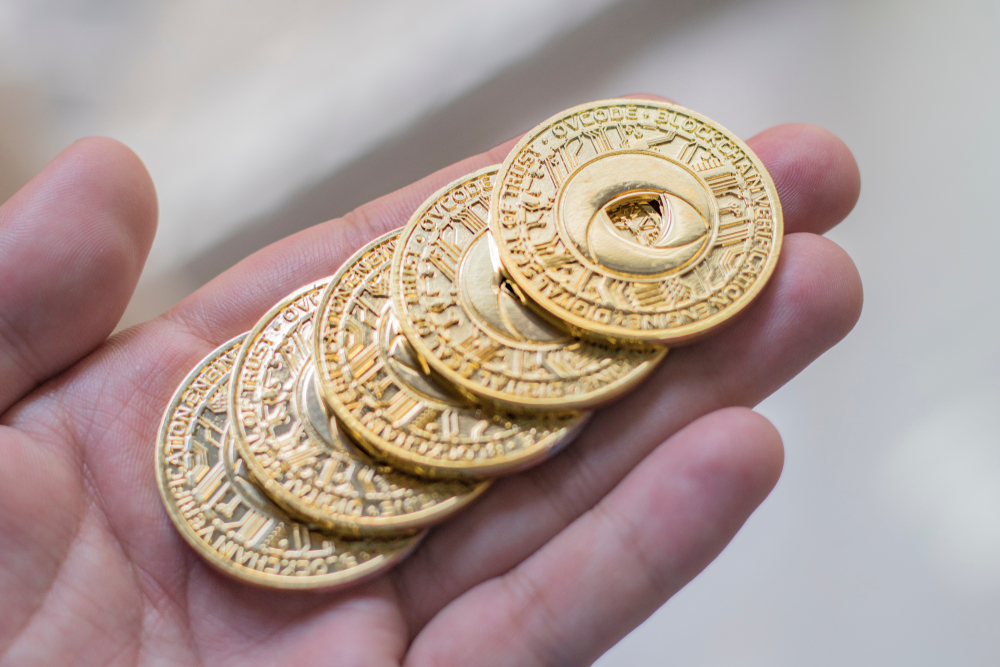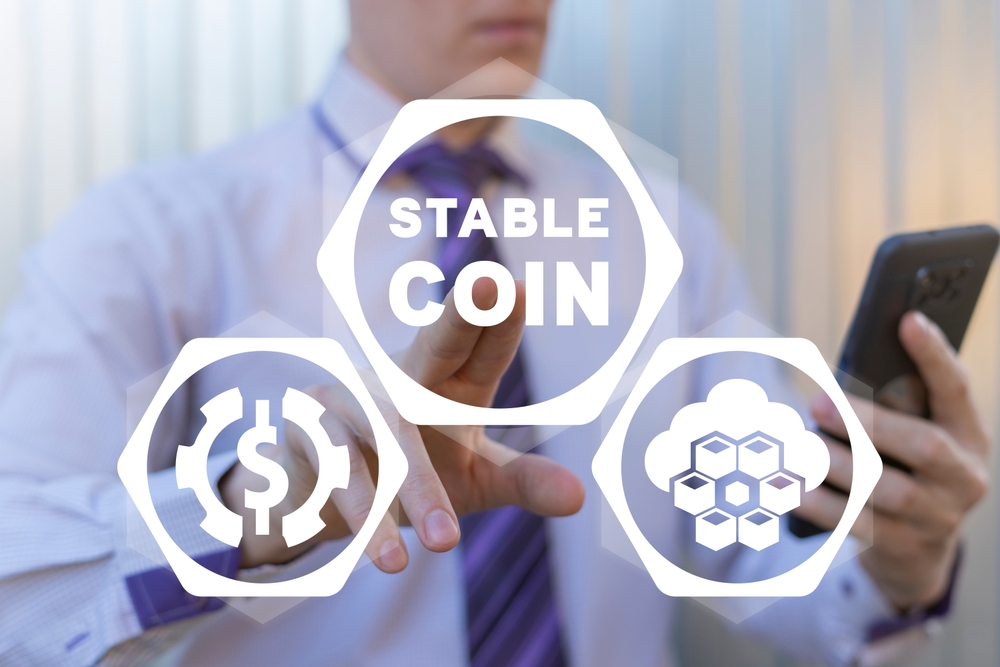Table of Contents
ToggleIntroduction
ChainSwap technology represents a significant advance in the field of blockchain interoperability. It allows for the exchange of assets across different blockchains without the need for a centralized third party. This process, also known as atomic cross-chain swap, is vital in creating a more interconnected and efficient blockchain ecosystem. By using smart contracts, ChainSwap ensures that transactions are secure and can be executed automatically, thus paving the way for a seamless and decentralized method of trading digital assets between various blockchain platforms.
Security and the underlying technology are at the heart of ChainSwap’s capabilities. By utilizing cryptographic methods and innovative protocols, these swaps maintain the integrity and privacy of the transactions. Integration with existing blockchain infrastructures is also a critical aspect, as it determines the adaptability and ease of use of ChainSwap services. User trust is further bolstered by the system’s adherence to regulatory compliances and the provision of clear user guidance on executing transactions.
Key Takeaways
- ChainSwap facilitates asset exchanges across blockchains autonomously using smart contracts.
- The initiative prioritizes robust security measures and integration with multi-chain environments.
- Transparency and adherence to legal standards are essential to ChainSwap’s user trust and acceptance.
Overview of ChainSwap
ChainSwap represents a strategic innovation in the landscape of blockchain technology, offering a bridge between the sometimes isolated stands of various networks. It is at the forefront of enabling seamless transactions across multiple blockchains, heralding an interoperable future for cryptocurrencies.
Concept and Vision
ChainSwap is a protocol designed to achieve direct, trustless, and swift transactions between different blockchains. It pioneers a revolutionary solution in the digital currency space by allowing users to exchange assets across various chains without relying on intermediaries. The vision is to create a vastly interconnected network, wherein diverse cryptocurrencies could be exchanged with ease, fostering an interoperable future where blockchains are no longer siloed.
Key Features
- Cross-Chain Capability: ChainSwap facilitates the direct transfer of assets between blockchains, which is pivotal for users holding multiple types of cryptocurrency on different networks.
- Decentralization: It upholds the decentralized ethos of blockchain by enabling transactions without the need for central oversight, giving users control over their assets.
By employing relay and adapter techniques, as indicated in the research on Relay based atomic cross-chain swap protocol, ChainSwap ensures that the assets’ integrity and security are maintained throughout the process.
Technology and Security
When it comes to ChainSwap, the technology forms the backbone of its functionality, while security is the shield that protects every transaction within its network. These facets are deeply intertwined, ensuring secure and efficient cross-chain swaps.
Architecture
ChainSwap’s architecture is designed for seamless cross-chain transactions, supporting assets from various blockchains like Ethereum and other compatible networks. Its protocol employs the Chainlink Cross-Chain Interoperability Protocol (CCIP), which is crucial for enabling secure and decentralized messaging across different blockchains. This architecture not only facilitates the CSWAP token functionality but also ensures that smart contracts on different chains can interact with each other without central intermediaries.
Security Measures
To uphold the integrity of cross-chain swaps, ChainSwap integrates multiple layers of security measures. Firstly, smart contracts are audited rigorously to prevent vulnerabilities. Privacy is also a primary consideration, with mechanisms in place to protect user identities and transaction details. Secure encryption standards are utilized to safeguard information transmitted between chains, reinforcing users’ trust in the platform.
- Smart Contract Audits: Detailed checks to ensure code integrity and prevent exploits.
- Encryption: Advanced cryptographic techniques to secure data in transit.
Layer 5 Security
The concept of Layer 5 Security in ChainSwap refers to the application layer that interacts directly with end-users. This layer emphasizes user-centric security features without compromising the user experience. It includes multi-factor authentication, wallet security checks, and phishing protection. In addition, continuous monitoring is conducted to swiftly address any irregularities or threats, ensuring a resilient security environment for all entities involved in the transaction process.
- User-Centric Features:
- Multi-factor authentication
- Real-time wallet security monitoring
- Continuous Vigilance:
- Ongoing threat detection
- Rapid response protocols
Tokenomics
ChainSwap’s tokenomics intricately link to the governance and functionality of the platform. The central token, CSWAP, plays a crucial role in maintaining both the security and efficiency of cross-chain swaps.
CSWAP Token Details
CSWAP, the native utility token of ChainSwap, serves multiple functions within the ecosystem. With a total supplycapped at a specific limit, the token’s value is influenced by its scarcity and utility. The market cap of CSWAP essentially reflects the overall valuation of the ChainSwap network, determined by the price of CSWAP multiplied by the circulating supply. The all-time high and all-time low values of CSWAP provide historical data points that indicate the market’s valuation fluctuation over time. The fully diluted valuation represents the worth of the entire supply of CSWAP tokens at the current market price, assuming all tokens are in circulation.
- Ticker: CSWAP
- Total Supply: [Insert total supply]
- Circulating Supply: [Insert circulating supply]
- Market Cap: [Insert market cap]
- All-Time High: [Insert all-time high]
- All-Time Low: [Insert all-time low]
- Fully Diluted Valuation: [Insert fully diluted valuation]
Holders may utilize compatible wallets like MetaMask to participate in the ChainSwap ecosystem, enabling them to stake, vote on governance proposals, or provide liquidity.
Emission Schedule
The emission schedule of CSWAP tokens is a predetermined plan that outlines how and when new tokens are released into the ecosystem. This includes rewards for liquidity providers, stakers, and other ecosystem participants. A methodical emission schedule aims to prevent inflationary pressures by controlling the rate at which new tokens are introduced to the circulating supply.
- Initial Distribution: [Insert details of initial distribution]
- Staking Rewards: [Insert details about staking rewards emission]
- Liquidity Mining: [Insert details about liquidity mining emission]
- Governance Incentives: [Insert details about governance incentives]
The emission schedule is carefully designed to ensure long-term sustainability and to balance the interests of all ChainSwap participants over time.
Privacy Features
Privacy is of utmost concern in the realm of chain swaps, where financial transactions must maintain a level of anonymity to protect user identities and prevent potential tracking of asset flow. This section explores the technological advancements that bolster privacy in the context of chain swapping.
Privacy Swaps
Privacy swaps integrate mechanisms that enable users to exchange tokens or assets across different blockchain platforms while maximizing personal and financial privacy. A notable system advancing this cause is SwapCT, which proposes swap confidential transactions capable of preserving privacy in multi-token exchanges. The framework ensures that transactions remain cryptographically shielded, allowing individuals to transact with various ERC20 tokens while keeping the details obfuscated from public scrutiny.
Mixer Technologies
In the quest to achieve greater anonymity, mixer technologies play a crucial role. They work by pooling and mixing assets from numerous addresses, consequently obfuscating the trail back to the original parties involved. By breaking the direct links between sending and receiving addresses, mixer technologies complicate the traceability of funds, thereby fortifying financial privacy. The application of these technologies in cross-chain environments is instrumental in safeguarding user identities while they participate in decentralized financial activities.
Usability and Integration
In the landscape of blockchain technology, ChainSwap represents a significant leap in facilitating seamless transactions across different platforms. The focus on wallet compatibility and cross-chain functionality is paramount for user satisfaction and wider adoption.
Wallet Compatibility
ChainSwap has been designed with a keen understanding of user needs, especially concerning wallet compatibility. It is vital that users can operate with a variety of wallets, Metamask being a prime example, due to its widespread usage. The protocol ensures that whether one is transacting on Ethereum or other blockchains, the integration is smooth and reliable. This compatibility affords users the flexibility to manage assets across multiple chains without the need to switch wallets, thereby simplifying the overall experience.
Cross-Chain Functionality
When it comes to cross-chain functionality, ChainSwap excels by implementing a robust cross-chain swap protocol. This protocol is the crux of interoperability within the blockchain ecosystem, allowing for the transfer of assets between different chains. ChainSwap constructs a bridge that enables apps to transact on one blockchain while leveraging the strengths of another. The system operates under the premise that no single blockchain can cater to all use cases, and thus, interoperability is not just desirable but essential for blockchain applications to reach their full potential.
Market Performance
In this section, the performance of ChainSwap within the market is dissected, focusing on hard numbers and trends over time. Key indicators such as price, volume, and market capitalization will be examined to offer a comprehensive view of its trading metrics and historical analysis.
Trading Metrics
Price: ChainSwap’s current price is an important indicator of its immediate market position, reflecting investor sentiment and market demand.
Volume: The trading volume, which includes both buy and sell operations within a given timeframe, illustrates the liquidity and activity level of ChainSwap. A higher volume often implies a healthier market and can point to the robustness of ChainSwap’s trading environment.
Total Volume: When looking at the total volume, it encompasses all ChainSwap transactions over a set period and provides insight into the overall market engagement.
Market Cap: ChainSwap’s market capitalization, calculated by multiplying the current price per token by the circulating supply, is a valuable metric for gauging its relative size within the cryptocurrency ecosystem.
Historical Analysis
Trading Volume Over Time: Charting the trading volume over time reveals patterns in investor interest and can often predict future activity levels. These patterns can be tracked using resources like CoinGecko or CoinMarketCap.
Market Cap Growth: By examining the growth trajectory of ChainSwap’s market cap, investors can discern how the asset has matured over time. This helps in analyzing its market strength and stability compared to other cryptocurrencies.
Price Fluctuations: A historical analysis of price fluctuations provides investors with an understanding of ChainSwap’s past responsiveness to market events, which can be pivotal in taking strategic positions for the future.
Community and Communication
ChainSwap’s community engagement and communication strategy hinges on transparency and regular updates. Through their dedicated social media channels and support mechanisms, they ensure that members of the community receive timely information and assistance.
Social Media Channels
- Twitter: Delivering real-time updates, ChainSwap keeps their community informed on the latest developments and engages in discussions with its followers.
- Telegram: A platform for live, interactive discussions, Telegram allows community members to discuss various aspects of ChainSwap, ask questions, and receive immediate feedback from peers and the ChainSwap team.
- Medium: Used for in-depth updates and articles, ChainSwap publishes detailed explanations of their technology, tutorials, and thought leadership pieces.
Support and Updates
- Email: For direct support, ChainSwap offers assistance via email, providing a more personalized touch for resolving complex issues or inquiries.
- They maintain a frequent update schedule, informing their community about recent changes, upcoming features, and any potential issues through their communication channels.
By employing these tools, ChainSwap fosters a robust and informed community, essential for continued growth and adoption.
Partners and Ecosystem
The ChainSwap mechanism thrives on forging strong strategic partnerships and establishing robust network collaborations. These relationships are fundamental to the platform’s growth, promoting a more decentralized and interconnected DeFi ecosystem.
Strategic Partnerships
ChainSwap actively engages in partnerships with significant entities like ENS (Ethereum Name Service) and Circle, reinforcing its infrastructure for easy-to-use blockchain interactions and stablecoin integrations. These partnerships ensure that ChainSwap remains a vital contributor to the Ethereum network’s expansion and the broader DeFi infrastructure.
- ENS: Strengthens ChainSwap’s usability by simplifying address mechanisms.
- Circle: Extends the capabilities of ChainSwap through the integration of stablecoins.
Network Collaborations
In its mission to enhance decentralization and cross-chain interoperability, ChainSwap collaborates with CCIP (Cross-Chain Interoperability Protocol) and strategic oracle networks like Chainlink. These collaborations support secure cross-chain exchanges and fortify the overall network.
- CCIP: Facilitates secure and efficient cross-chain interactions.
- Chainlink: Integrates with ChainSwap to provide reliable, tamper-proof data feeds.
Through these focused efforts, ChainSwap aims to broaden its impact within the DeFi space, leveraging key partnerships to create a more flexible and user-friendly network.
User Guidance
In this section, the focus is on providing ChainSwap users with concise and practical guidance for initiating and completing cross-chain exchanges. The critical points include understanding the fundamentals of starting a swap and navigating the exchange process effectively.
Getting Started
To begin a ChainSwap, one must possess a basic understanding of what a swap entails. A swap is a transaction where two parties exchange different types of assets—like tokens or cryptocurrencies such as BTC or ETH—across distinct blockchain platforms. Users must first ensure they have the appropriate wallet setup to hold the assets they intend to exchange. They should also have the correct contract addresses for the tokens they plan to buy or exchange.
| Step | Action | Description |
|---|---|---|
| 1 | Wallet Setup | Securely set up a blockchain wallet that supports assets like BTC and ETH. |
| 2 | Asset Selection | Choose the asset or token to swap from the available options. |
| 3 | Contract Address | Obtain the correct contract address for the token to ensure a smooth swap. |
Exchange Process
Once set up, the user engages in the exchange process. The user selects the desired token on the ChainSwap platform and inputs the amount of the asset they wish to exchange. After confirmation, ChainSwap generates a transaction which the users must approve and sign using their private keys.
During an exchange, it is vital to monitor the transaction status until completion. Users should note that each swap involves network fees, and these can vary based on the congestion of the networks involved.
| Step | Action | Description |
|---|---|---|
| 1 | Select Token | Choose the token to swap to from ChainSwap’s list of supported assets. |
| 2 | Input Details | Enter the amount to swap and the recipient’s contract address. |
| 3 | Confirm & Sign | Verify transaction details, approve, and digitally sign to initiate the swap. |
| 4 | Monitor | Keep track of the swap progress and transaction confirmations. |
By following these steps, users can ensure that they execute exchanges accurately and securely on the ChainSwap platform.
Innovations and Roadmap
ChainSwap is charting a course towards a seamless interoperable future, earmarked by a series of innovative features and significant development milestones. The platform stands as a revolutionary solution in bridging the gap between different blockchains.
Upcoming Features
- Interoperability Enhancements: ChainSwap is focused on enhancing its cross-chain transfer protocol (CCTP), which will facilitate seamless asset transfers across various blockchains, reinforcing its position as a linchpin for interoperable transactions.
- Advanced Security Measures: They are set to introduce advanced security protocols to fortify the network against potential threats, ensuring users’ assets remain secure during cross-chain swaps.
Development Milestones
- Proof of Concept: The initial phase successfully showcased the potential of ChainSwap’s architecture to realize the vision of a fully interoperable blockchain ecosystem.
- Beta Launch: A pivotal milestone where ChainSwap will unveil a working beta to the public, offering a tangible look at the platform’s capabilities.
With its clear roadmap, ChainSwap is poised to evolve the realms of cross-chain interaction, bringing the concept of a unified blockchain network closer to reality. Its development trajectory underscores a commitment to innovation and a future conducive to decentralized, borderless exchange.
Legal and Compliance
ChainSwap processes are under increasing scrutiny from a variety of regulatory bodies. Clear understanding of legal obligations and compliance requirements is essential for individuals and entities engaging with these protocols.
Regulatory Landscape
Regulatory guidelines for ChainSwap activities are evolving, as they intersect with various jurisdictional legislations aimed at financial transactions. The absence of universal standards for cross-chain transactions necessitates that entities closely monitor and adhere to specific regional regulations. In the United States, for example, The Securities and Exchange Commission (SEC) may view certain tokens traded via ChainSwaps as securities, thereby subjecting them to relevant securities laws. Entities should be aware that the compliance landscape is particularly complex due to the global, decentralized nature of blockchain technology.
Entities must ensure that their ChainSwap activities fall within the bounds of established anti-money laundering (AML) and know your customer (KYC) regulations. These compliance measures are critical in preventing illicit activities and are enforced rigorously across jurisdictions. For instance, ChainSwap mechanisms have to incorporate strong dataprotection and privacy measures to comply with regulations like the General Data Protection Regulation (GDPR) in the EU, which focuses on data security and user privacy.
User Responsibility
Participants in ChainSwap transactions also bear individual responsibility to abide by legal and regulatory standards. They must ensure that they only engage with platforms that demonstrate a high level of security and comply with the necessary regulatory frameworks. Users should perform due diligence to confirm that the ChainSwap solution provides transparent mechanisms to address legal accountability, such as clear documentation of transactions and proper contractual agreements in place.
Moreover, users need to be cognizant of the tax implications associated with cross-chain transactions. In many jurisdictions, these events could trigger tax liabilities, and accurate reporting of any gains or losses is a user’s responsibility. Staying informed on how ChainSwaps are treated by local tax laws is imperative for users to ensure full compliance with tax obligations.
Frequently Asked Questions
Cross-chain swaps are becoming essential for blockchain interoperability, allowing users to exchange tokens across different blockchains without the need for a centralized intermediary. Below are some of the common queries related to this burgeoning technology.
How does one perform a cross-chain swap using a decentralized exchange (DEX)?
To perform a cross-chain swap on a DEX, a user typically needs to connect a compatible wallet, choose the amount and type of cryptocurrency to swap, select the target chain, and execute the transaction, which can be processed through smart contracts ensuring security and atomicity.
What platforms support cross-chain swaps compatible with MetaMask?
Platforms like Uniswap and 1inch offer cross-chain swap capabilities compatible with MetaMask, allowing users to connect their wallet directly and swap assets across supported blockchains.
What are the most common cryptocurrencies available for cross-chain swaps?
Bitcoin, Ethereum, and Litecoin are among the most common cryptocurrencies available for cross-chain swaps due to their widespread adoption and support by numerous swap protocols and decentralized exchanges.
How does LayerZero facilitate cross-chain swapping?
LayerZero is an interoperability protocol designed to facilitate trustless cross-chain communication and token swaps, utilizing relayers and oracles to provide a channel for blockchains to interact with each other seamlessly.
What are the latest price predictions for popular coins on cross-chain swap platforms?
While price predictions are speculative and subject to market dynamics, many platforms and analysts provide predictions based on historical data and current trends, acknowledging the volatility inherent in cryptocurrency markets.
Which exchanges currently support purchasing tokens for cross-chain swapping?
Exchanges such as Binance, KuCoin, and Kraken support the purchase of a variety of tokens that can be used for cross-chain swapping on different decentralized platforms.






















